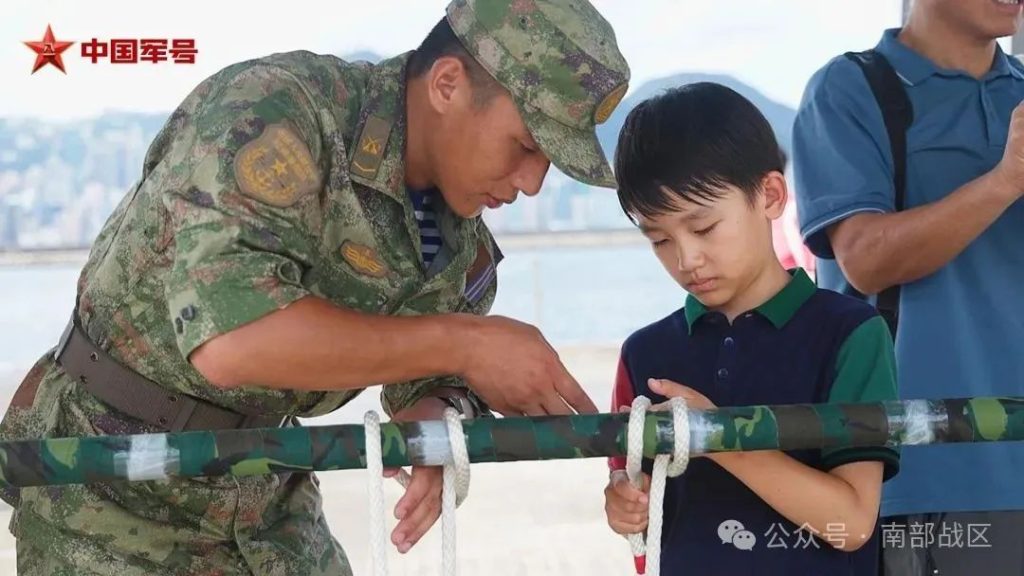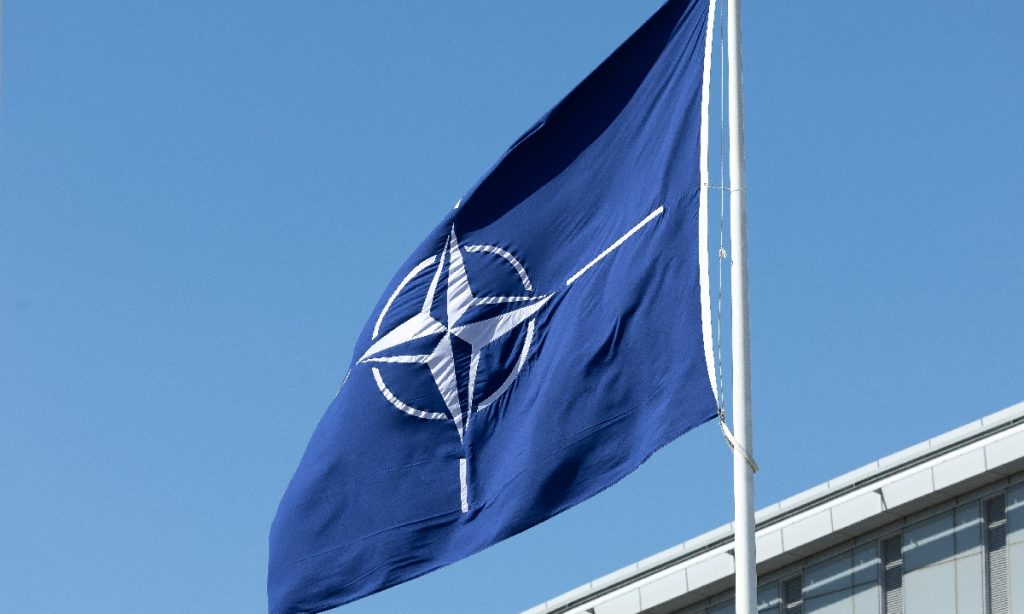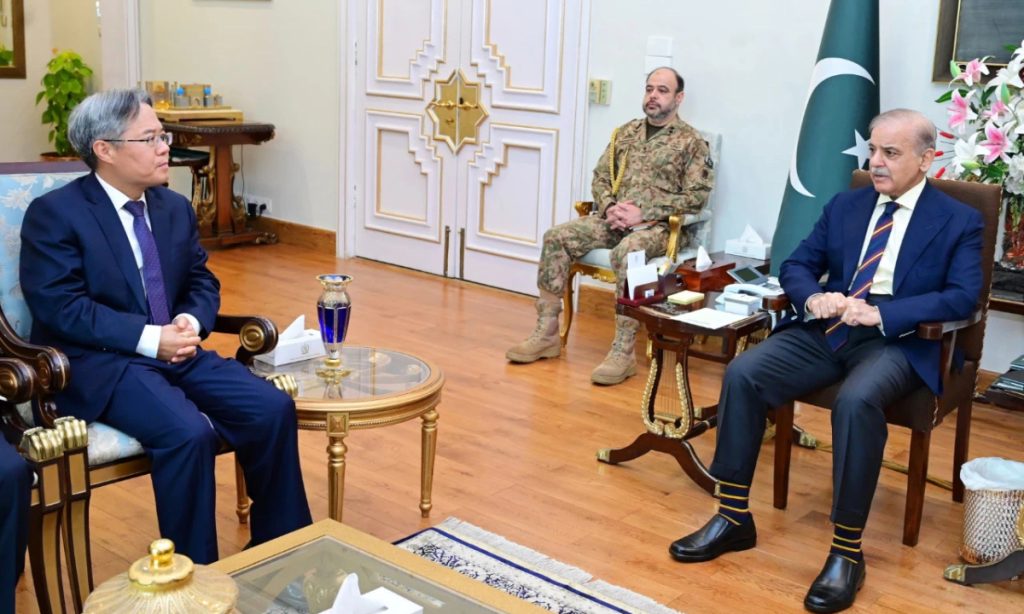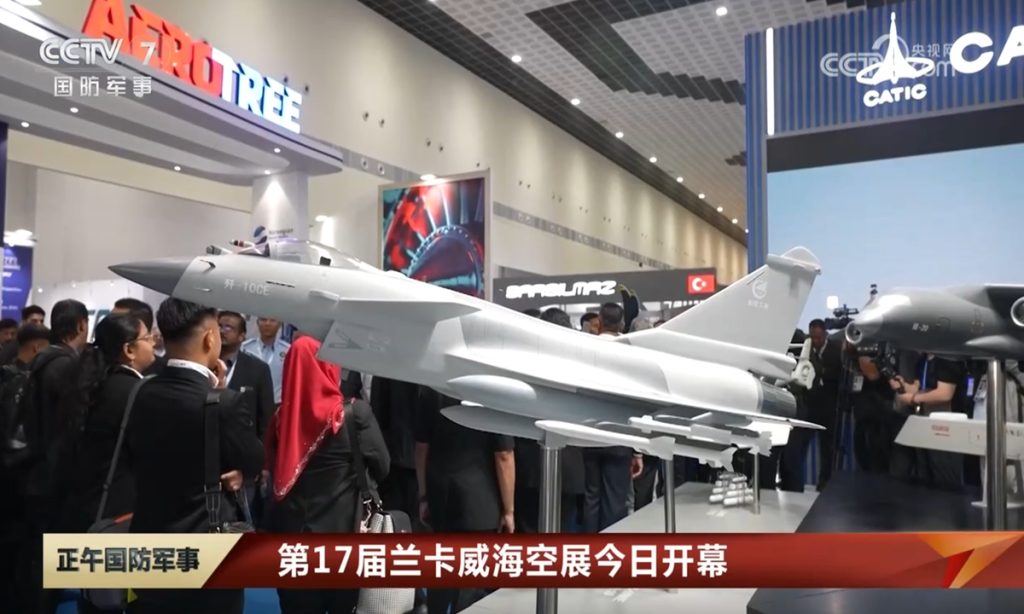PLA HK garrison holds open day to celebrate 28th anniversary of HK’s return to motherland

To celebrate the 28th anniversary of Hong Kong's return to the motherland and the Chinese People's Liberation Army's garrisoning in Hong Kong, the PLA Hong Kong Garrison held an open day event from Saturday to Sunday, inviting Hong Kong residents to visit the barracks in Ngong Shuen Chau, Shek Kong and San Wai, the Xinhua News Agency reported.
At Ngong Shuen Chau Barracks, a grand flag-raising ceremony was held at around 10 am on Saturday. As the national anthem played, the guard of honor marched in precise steps. Residents and garrison personnel stood at attention, saluted the national flag and sang the anthem.
Troops performed military demonstrations including bayonet exercises and hunter combat training to showcase their combat capabilities. In the equipment exhibition area, residents experienced handling firearms, observed military vehicles, boarded naval vessels and learned rope-tying techniques and conducted simulated shooting under the soldiers' guidance, according to Xinhua.
A helicopter flight demonstration drew large crowds at Shek Kong Barracks, with pilots expertly performing stunts such as sharp dives and sudden climbs. Still buzzing with excitement after the show, many residents visited the air force equipment display area to take photos in front of the helicopter.
Numerous local families visited the exhibition center to learn about the history and achievements of the Communist Party of China (CPC), the nation, and the military.
Hong Kong resident Jelly Chou took her child Xiaoye (alias) on Saturday to visit the Shek Kong Barracks, where Xiaoye experienced standing at military posture, toured the exhibition center, and listened to the stories of PLA soldiers stationed in Hong Kong.
Under the guidance of soldiers, Xiaoye also experienced simulated shooting. "My kid later told me that she wants to join the PLA after she grows up," Chou said.
During the open day, the garrison staged themed performances showcasing the troops' loyalty to their mission and the deep bond between soldiers and Hong Kong residents.
Chou told the Global Times on Sunday that she was profoundly impressed and reassured within the barracks. "Children of my kid's generation live in a peaceful and advanced life, lacking practical understanding of those who silently safeguard them," Chou said, adding that the open day effectively helps children understand where peaceful life originates and appreciate the greatness of the PLA and the motherland.
"The sense of pride in the motherland should be instilled in children at an early age," she said.
This marks the 35th open day held by the garrison, which has received 930,000 visits over the past 28 years. In recent years, the garrison has organized activities such as summer camps and patriotic education programs, and has taken part in tree planting, elderly care and childcare initiatives, according to Xinhua.


